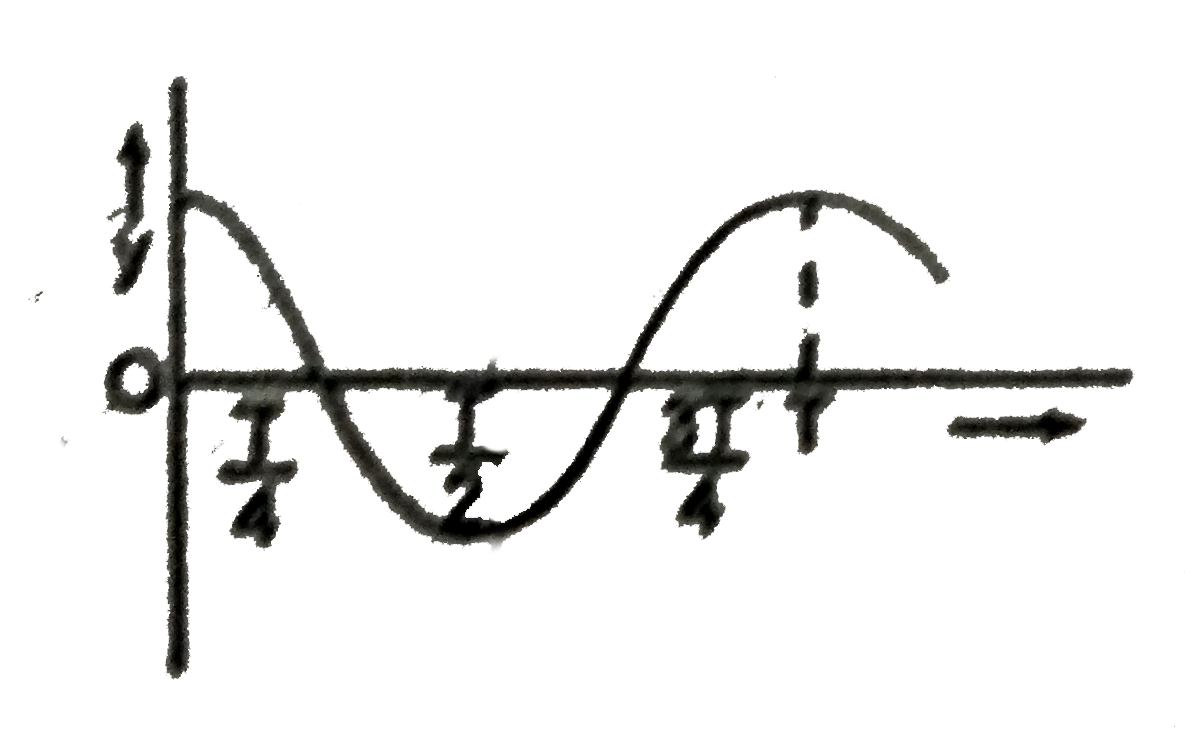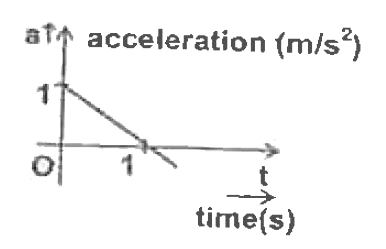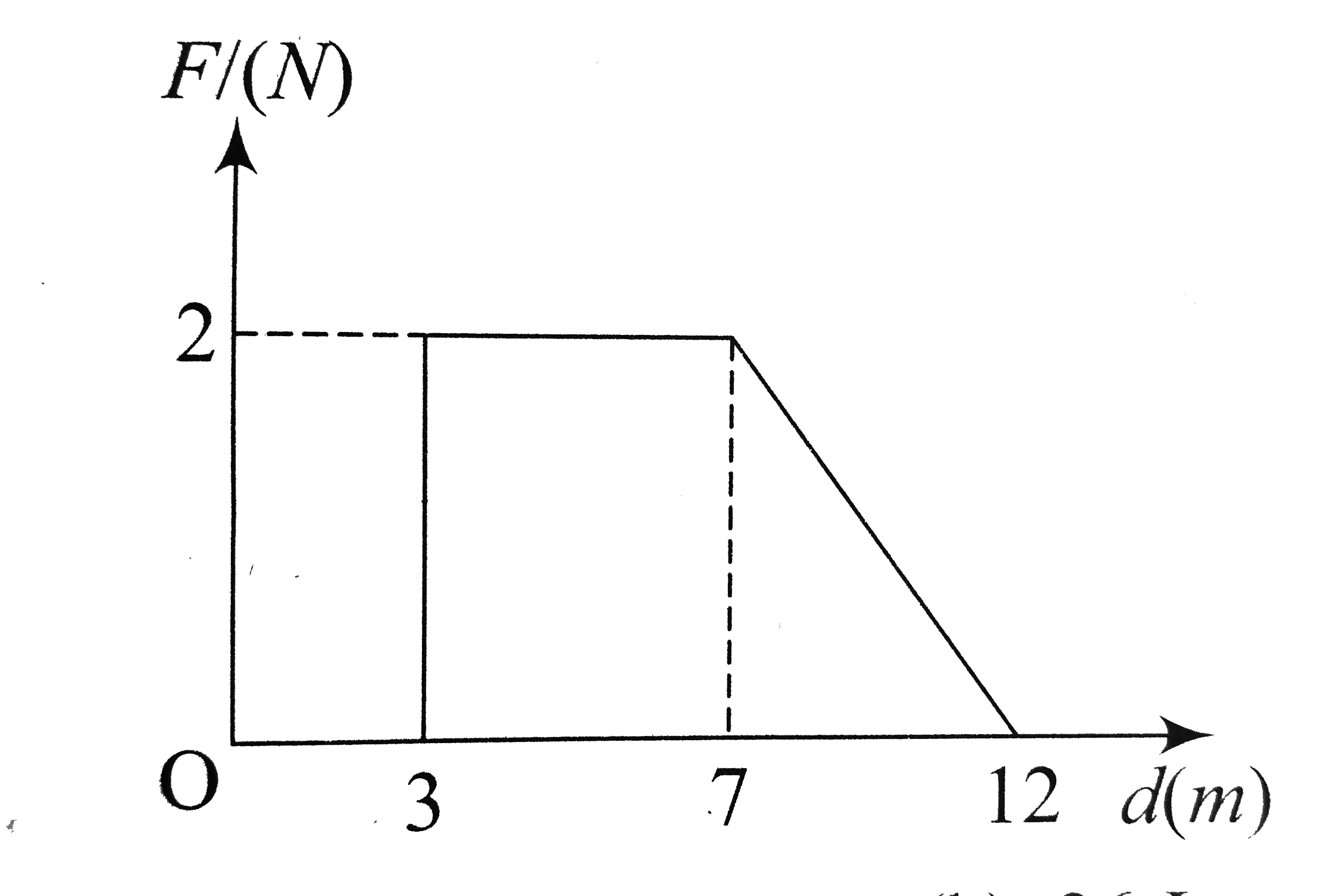A particle is constrained to move on a straight line path. It returns to the starting point after 10 sec . The total distance covered by the particle during this time is 30 m . Which of the following statements about the motion of the particle is false
Displacement of the particle is zero
Average speed of the particle is 3ms−1
Displacement of the particle 30 m
Both (a) and (b)
The correct Answer is:D
To solve the problem, we need to analyze the motion of the particle based on the information provided.
Given Information:
- The particle returns to the starting point after 10 seconds.
- The total distance covered by the particle during this time is 30 meters.
1. Understanding Displacement:
- Displacement is defined as the change in position of an object. It is a vector quantity and is calculated as the final position minus the initial position.
- Since the particle returns to its starting point, the initial and final positions are the same. Therefore, the displacement of the particle is:
Displacement=Final Position−Initial Position=0m
2. Calculating Average Speed:
- Average speed is defined as the total distance traveled divided by the total time taken.
- The total distance covered by the particle is given as 30 meters, and the total time taken is 10 seconds. Thus, the average speed can be calculated as follows:
Average Speed=Total DistanceTotal Time=30m10s=3m/s
3. Analyzing Statements:
- Now we need to evaluate the statements provided in the question:
- Statement A: Displacement of the particle is zero. (True)
- Statement B: Average speed of the particle is 3 m/s. (True)
- Statement C: The particle moved in a straight line. (True, as it is constrained to move on a straight line path)
- Statement D: The total distance covered is equal to the displacement. (False, since total distance is 30 m and displacement is 0 m)
4. Conclusion:
- The false statement among the options is that the total distance covered is equal to the displacement. Therefore, the correct answer is that the false statement is D.
- The particle returns to the starting point after 10 seconds.
- The total distance covered by the particle during this time is 30 meters.
- Displacement is defined as the change in position of an object. It is a vector quantity and is calculated as the final position minus the initial position.
- Since the particle returns to its starting point, the initial and final positions are the same. Therefore, the displacement of the particle is:
Displacement=Final Position−Initial Position=0m
- Average speed is defined as the total distance traveled divided by the total time taken.
- The total distance covered by the particle is given as 30 meters, and the total time taken is 10 seconds. Thus, the average speed can be calculated as follows:
Average Speed=Total DistanceTotal Time=30m10s=3m/s
- Now we need to evaluate the statements provided in the question:
- Statement A: Displacement of the particle is zero. (True)
- Statement B: Average speed of the particle is 3 m/s. (True)
- Statement C: The particle moved in a straight line. (True, as it is constrained to move on a straight line path)
- Statement D: The total distance covered is equal to the displacement. (False, since total distance is 30 m and displacement is 0 m)
- The false statement among the options is that the total distance covered is equal to the displacement. Therefore, the correct answer is that the false statement is D.
Topper's Solved these Questions
- BOOK - DC PANDEY ENGLISHCHAPTER - MOTION IN A PLANEEXERCISE - Check point 3.310videos
MOTION IN A PLANE
- BOOK - DC PANDEY ENGLISHCHAPTER - MOTION IN A PLANEEXERCISE - Check point 3.415videos
MOTION IN A PLANE
- BOOK - DC PANDEY ENGLISHCHAPTER - MOTION IN A PLANEEXERCISE - Check point 3.110videos
MOTION IN A PLANE
- BOOK - DC PANDEY ENGLISHCHAPTER - MOTIONEXERCISE - Medical entrances gallery19videos
MOTION
- BOOK - DC PANDEY ENGLISHCHAPTER - PROJECTILE MOTIONEXERCISE - Level - 2 Subjective10videos
PROJECTILE MOTION
Similar Questions
A particle starts moving along a straight line path with velocity 10m/s. After 5s the distance of the particle from the starting point is 50m. Which of the following statements about the nature of motion of the particle are correct?
View SolutionA particle is moving on a straight line. Its velocity at time t is (8−2t)m/s. What is the total distance covered from t=0 to t=6s?
View Solution
Knowledge Check
- Question 1 - Select One
A particle moves with uniform velocity. Which of the following statements about the motion of the particle is true?
AIts speed is.zeroBIts acceleration is zeroCIts acceleration is opposite to the velocityDIts speed may be variable. - Question 2 - Select One
Which of the following statements is not correct regarding the motion of a particle in a straight line?
Ax-t graph is a parabola, if motion is uniformly accelerated.Bv-t is a straight line inclined to the time-axis, if motion is uniformly accelerated.Cx-t graph is a straight line inclined to the time axis if motion is uniform and acceleration is zero.Dv-t graph is a parabola if motion is uniform and acceleration is zero.
A particle, initially at rest, starts moving in a straight line with an acceleration a=6t+4m/s2. The distance covered by it in 3 s is
View SolutionThe displacement time graph of a particle executing S.H.M. (in straight line) is shown. Which of the following statements is true?
 View Solution
View SolutionA particle covers equal distance aroung a circular path, in equal intervals of time. Which of the following quntities connected with the motion of the particle remains constant with time?
View SolutionA particle at rest starts moving in a horizontal straight line with a uniform acceleration. The ratio of the distances covered during the fourth and third seconds is
View SolutionA particle starting from rest moves in a straight line with acceleration as shown in the a-t graph. Find the distance (in m) travelled by the particle in the first four seconds from start of its motion.
Q View Solution
View SolutionForce F on a particle moving in a straight line varies with distance d as shown in the figure. The work done on the particle during its displacement of 12m is
 View Solution
View Solution
